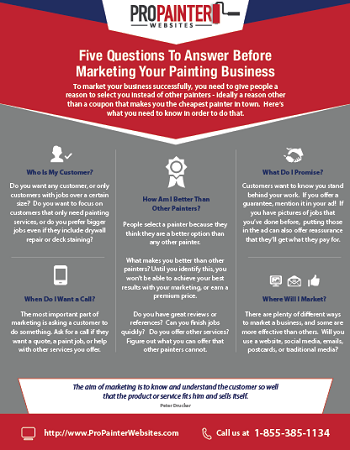Seasonal Considerations For Industrial Exterior Painting: What You Required To Know
Seasonal Considerations For Industrial Exterior Painting: What You Required To Know
Blog Article
Material Develop By-Leach Celik
When you're intending a commercial exterior painting task, seasonal aspects can make or break your results. You'll wish to take into consideration exactly how temperature level and humidity influence paint application and drying out times. Choosing the appropriate period can ensure your paint sticks properly and lasts much longer. Yet which periods are absolutely the very best for this kind of work? Let's explore the key elements that can impact your task's success.
The Effect of Temperature on Paint Application
When you're preparing a commercial external painting job, the temperature level can substantially influence how well the paint sticks and dries.
Ideally, you intend to paint when temperature levels range between 50 ° F and 85 ° F. If painting costs per room 's too chilly, the paint might not cure correctly, causing concerns like peeling off or cracking.
On the flip side, if it's too hot, the paint can dry too promptly, stopping appropriate bond and causing an uneven surface.
https://www.duluthnewstribune.com/sports/northland-outdoors/ojibwe-artist-follows-his-spirit-home-to-paint must likewise think about the time of day; morning or late afternoon provides cooler temperatures, which can be more desirable.
Constantly inspect the producer's recommendations for the particular paint you're making use of, as they usually offer assistance on the excellent temperature level variety for optimal outcomes.
Humidity and Its Effect on Drying Times
Temperature isn't the only ecological element that affects your industrial exterior painting project; humidity plays a considerable duty also. High humidity levels can slow down drying out times drastically, impacting the total high quality of your paint work.
When the air is saturated with wetness, the paint takes longer to treat, which can bring about issues like poor bond and a greater danger of mildew growth. If you're repainting on an especially humid day, be planned for extensive delay times between layers.
It's important to keep track of local weather and strategy accordingly. Ideally, aim for moisture degrees between 40% and 70% for ideal drying.
Maintaining these factors in mind ensures your project remains on track and supplies a lasting surface.
Best Seasons for Commercial Exterior Painting Projects
What's the very best season for your industrial exterior painting projects?
Springtime and early fall are usually your best options. Throughout these seasons, temperatures are moderate, and moisture degrees are commonly lower, developing excellent conditions for paint application and drying out.
Stay clear of summertime's intense heat, which can create paint to completely dry too quickly, causing bad adhesion and surface. In a similar way, winter's chilly temperature levels can impede appropriate drying and curing, taking the chance of the long life of your paint work.
Go for days with temperature levels between 50 ° F and 85 ° F for ideal results. Keep in mind to inspect the regional weather prediction for rain, as damp conditions can spoil your project.
Planning around these elements guarantees your painting task runs efficiently and lasts longer.
Conclusion
To conclude, planning your industrial external paint tasks around seasonal considerations can make a substantial distinction in the end result. By organizing work during the perfect temperatures and humidity degrees, you'll guarantee better attachment and drying out times. behr company in mind to watch on regional weather prediction and select the right time of year-- spring and very early fall are your best bets. Taking these actions will aid you achieve a resilient and professional surface that lasts.
